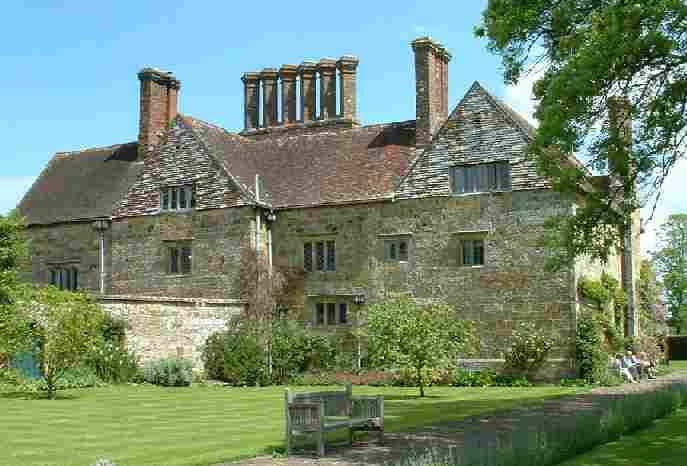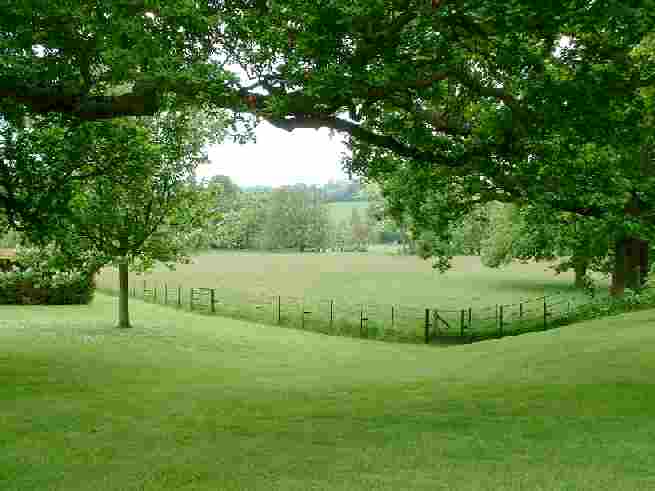|
BATEMANS - RUDYARD KIPLING
|
||
|
HOME | BIOLOGY | BOOKS | FILMS | GEOGRAPHY | HISTORY | INDEX | INVESTORS | MUSIC | NEWS | SOLAR BOATS | SPORT |
||
|
Bateman's, is close to the village of Burwash in East Sussex. It is thought the house was built by a Wealden ironmaster, or iron dealer, named John Britten, at a time when the Sussex Weald, with its forests for charcoal, was a flourishing centre of the ancient English iron industry. There is much evidence of forges in the area. It is also, perhaps, not a coincidence that there are many Sussex ironbacks and firedogs by the fireplaces in the house. The date over the porch is: AD 1634, as an indication of when the house was built.
Surrounded by the wooded landscape of the Sussex Weald, Bateman's is an idyllic spot in the Dudwell Valley. Owned and loved by Rudyard Kipling, Bateman's became his sanctuary. A member of his family once said "the house stands like a beautiful cup, on a saucer to match". Kipling, like the Baron de Roemer, at Lime Park, Herstmonceux, installed electricity at a time when the grid had not been established.
Batemans - Rudyard Kipling's Sussex retreat
Bateman's is built largely of local sandstone, the tiles of the hipped roofs and six chimneystacks are made from Weald clay, and the floorboards, staircase and wood paneling are from Sussex oak. The oak tree grows in such abundance in this part of the country that it is nicknamed 'the Sussex Weed'. Mullioned windows, pilasters, and the round arch of the porch give, a hint of the Renaissance. The front entrance is not symmetrical, as there is a gabled wing on the south side, but not on the north. On the outer left-hand pier of the porch are the carved initials of the family.
Rudyard Kipling settled in the house in 1902 with his American wife, and lived there for over thirty years, until his death, rejoicing in its seclusion under the Sussex downs, and in the evidence all around of thousands of years of English history.
Although the seclusion this house offered was perfect, the home comforts at that time were few, with no electricity, no running water upstairs, and no bathroom. A feature which Kipling had no intention of changing, however, was the lack of a telephone in the house. Furthermore, the abundance of open fireplaces throughout the house provided a useful means of disposal for the manuscripts that Kipling did not want the world to see.
"It was the heartbreaking Locomobile that brought us to the house called 'Bateman's', he wrote in Something of Myself. We had seen an advertisement of her, and we reached her down an enlarged rabbit-hole of a lane. At very first sight the Committee of Ways and Means [Mrs Kipling and himself] said 'That's her! The only She! Make an honest woman of her - quick!'. We entered and felt her Spirit - her Feng Shui - to be good. We went through every room and found no shadow of ancient regrets, stifled miseries, nor any menace though the 'new' end of her was three hundred years old...
Batemans - Sussex countryside
The heart of Kipling's house was the study, where he wrote many of his famous works and where favoured friends were invited to sit whilst he worked. His collection of books cover a most interesting, and wide-ranging, array of subjects from rat catching to manures, or from gates and fences to bridges. It is known that, when Kipling had tired of his guests, he liked to take them into the garden to look at the sundial. After noticing the inscription "it is later than you think" they, hopefully, took the hint to be quickly on their way! Despite his wish for peace and seclusion, Kipling did enjoy entertaining visitors and many were welcomed over the years. Among the most famous of them was Stanley Baldwin, the Conservative Prime Minister, and cousin to Rudyard Kipling.
The Rose Garden
Today, the visitor can still enjoy the terraced lawns, the walled garden, the working watermill, and his beautiful 1928 Rolls Royce, as well as the many personal possessions remaining in the house moreorless as he left them on this death in 1936.
South-East Region | East Sussex | Notable House Sites | MultiMap | The National Trust
Batemans - Burwash, East Sussex Tel: (01435) 882302 Fax: (01435) 882811 Opening times: 23rd March - 29th September. Closed Thursdays and Fridays except Good Friday. 11.00 am - 5.30 pm last entry 4.30 pm.
Batemans is on the same English Heritage monument protection programme as the Old Steam House at Herstmonceux. This book is all about how the generating buildings became the subject of the greatest planning scandal in British history, but were in the process saved and finally recognised for what they are.
LINKS:
Battle
Abbey
Herstmonceux Electricity Generating Works Circa. 1900 - 1936 Links:
Introduction | Instructions | ISBN | Batteries | Boiler Room | Floor Plan |
Industrial Revolution | Lime Park | Machinery | Map | Power House
Public Supply | Roof Construction | Rural Supply | Sussex Express 1913 | Conclusion
Archaeology South East | East Sussex CC | English Heritage | SIAS
MARITIME HISTORY
GENERAL HISTORY
New energy drinks for performers .. Thirst for Life
330ml Earth can - the World in Your Hands
|
||
|
This website is Copyright © 1999 & 2012 Electrick Publications. The bird logos and name Solar Navigator are trademarks. The name '1824' is a trade mark of Solar Cola Ltd. All rights reserved. Max Energy Limited is an educational charity. |
||
|
AUTOMOTIVE | BLUEPLANET | ELECTRIC CARS | ELECTRIC CYCLES | SOLAR CARS | SOLARNAVIGATOR | UTOPIA |


